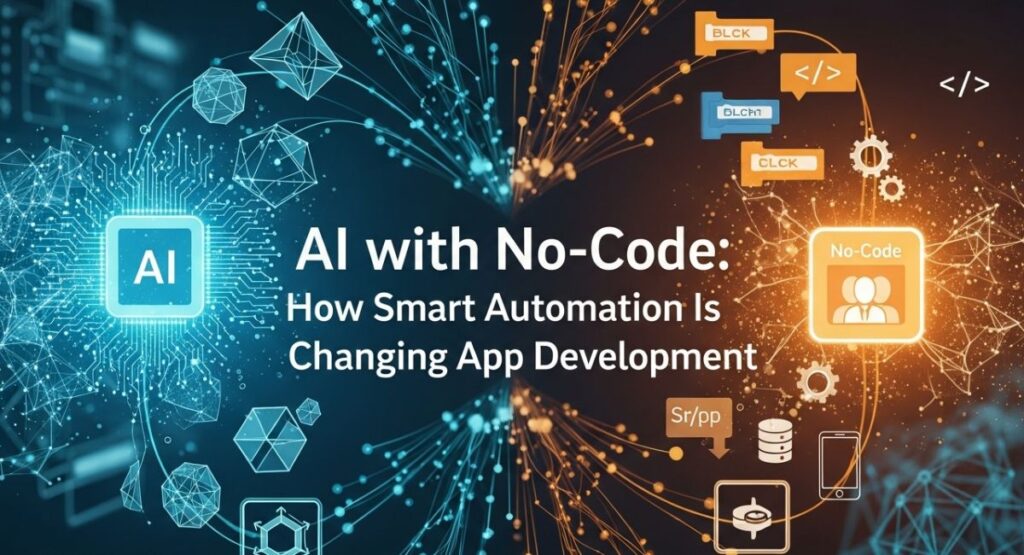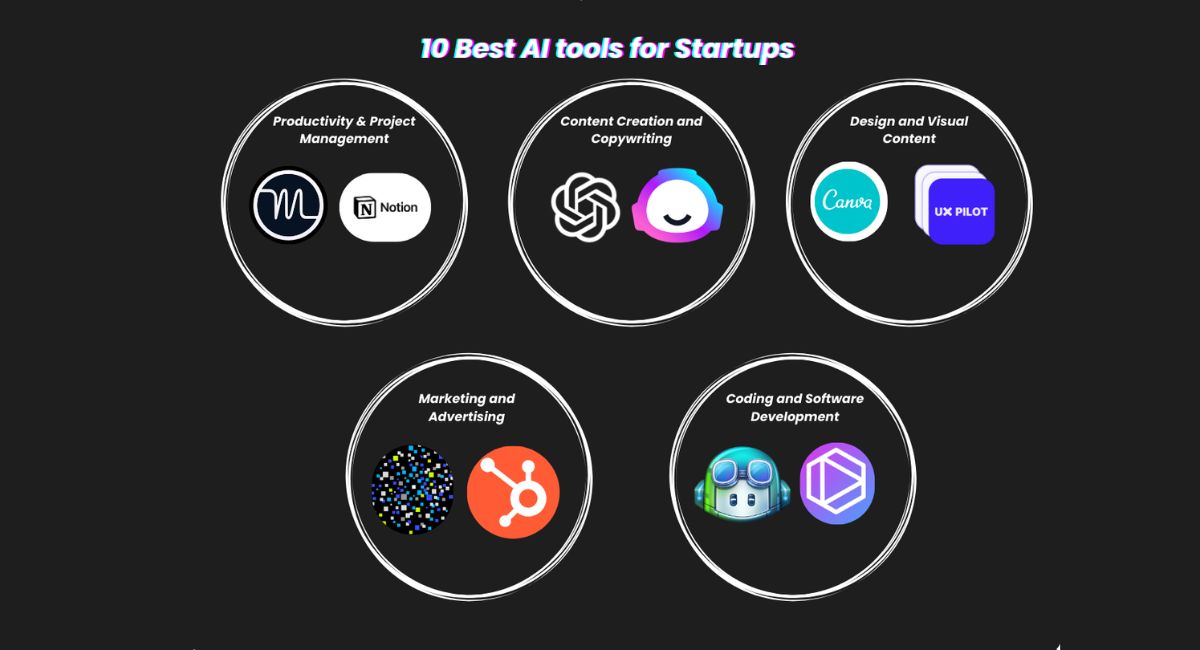App development is undergoing a quiet revolution. For years, building intelligent applications meant hiring developers, managing complex codebases, and investing heavily in infrastructure. Today, a new wave of technology no-code AI apps is breaking those barriers. These platforms allow anyone, regardless of technical background, to design, train, and deploy smart applications through visual interfaces.
The shift toward no-code AI tool development is not just about saving time or money; it’s about democratizing innovation. Entrepreneurs, marketers, teachers, and small-business owners can now build AI-driven tools that once required teams of programmers. This article explores how no-code AI apps are changing modern app development, the platforms enabling it, and the opportunities it brings for both developers and non-developers alike.
Understanding No-Code AI Apps
No-code AI apps combine artificial intelligence with visual development. Instead of writing code, users drag and drop pre-built components to design logic, user flows, and AI behavior. These tools manage data processing, model training, and API integration behind the scenes.

Key elements include:
- Visual workflow builders
- Pre-trained AI models for language, vision, and prediction
- One-click deployment and cloud hosting
- Integration with popular business systems like CRMs and analytics tools
The beauty of no-code AI apps is accessibility. Anyone can create a chatbot, automate workflows, or build intelligent dashboards within hours.
Traditional Development vs. No-Code AI Apps
| Feature | Traditional App Development | No-Code AI Apps |
| Skill Requirement | Requires coding expertise | No coding needed |
| Development Time | Weeks or months | Hours or days |
| Cost | High upfront cost | Affordable subscription |
| Flexibility | Moderate | High, visual editing |
| Accessibility | Developers only | Open to everyone |
This comparison highlights why no-code AI app builder platforms are gaining popularity. They shorten development cycles and open opportunities to those previously excluded from tech innovation.
READ MORE: The Inspiring Journey of NVIDIA CEO Jensen Huang: The Man Behind the AI Revolution
The Rise of No-Code AI Tool Development
The growing interest in no-code AI tool development is fueled by two trends: automation and democratization. Businesses want to streamline workflows without hiring large tech teams, and individuals want tools tailored to their specific needs.
These platforms integrate machine learning models, natural-language processing, and predictive analytics into drag-and-drop environments. A marketing manager can build an intelligent campaign predictor, or an HR executive can create an automated applicant-screening tool all without writing a single line of code.
How No-Code AI Tool Development Accelerates Innovation
- Speed: Projects that once took months can now be completed in days.
- Cost-Efficiency: Licensing a no-code AI app builder costs far less than hiring full-time developers.
- Scalability: Apps can start small and scale automatically with cloud infrastructure.
- Accessibility: Teams without technical backgrounds can prototype and test new ideas freely.
- Collaboration: Cross-department collaboration becomes seamless when everyone can participate in app creation.
This new era of no-code AI tool development gives organizations agility an essential trait in fast-moving digital markets.
Key Features of No-Code AI App Builder Platforms
Modern no-code AI app builder platforms share several common features that empower users to create powerful solutions effortlessly:
- Drag-and-Drop UI: Build workflows visually.
- Pre-Trained AI Models: Use existing AI capabilities like text analysis or image recognition.
- Integration APIs: Connect with tools such as Google Sheets, Slack, or Salesforce.
- Automation Modules: Streamline repetitive business tasks.
- Cloud Deployment: Deploy instantly with built-in scalability and security.
Popular No-Code AI App Builder Platforms
| Platform | Core Strength | Ideal For |
| Bubble | Full-stack development with AI add-ons | Web apps |
| Appy Pie | Mobile-first AI integration | Small businesses |
| Microsoft Power Apps | Workflow automation | Enterprises |
| Builder.ai | AI-assisted custom solutions | Startups & SMEs |
These platforms show how no-code AI apps can suit every type of user from individuals building prototypes to enterprises deploying large-scale systems.
READ MORE : Emerging Trends Shaping the Future of Digital Technology in 2025
Benefits of No-Code AI Apps for Non-Developers
The greatest promise of no-code AI apps is empowerment. Through no-code AI for non-developers, innovation becomes inclusive. Business professionals, educators, and freelancers can build tools tailored to their exact needs.
Major Advantages
- Faster Development: Visual tools let users design and test ideas quickly.
- Reduced Cost: Subscriptions are cheaper than hiring developers.
- Accessibility: No prior coding experience is required.
- Customization: Templates and pre-built modules can be adapted easily.
- Experimentation: Users can build, test, and iterate freely without large budgets.
Empowering Creativity with No-Code AI for Non-Developers
Consider a small retailer who wants to predict seasonal demand. Using a no-code AI app builder, they can upload past sales data, apply an AI prediction model, and generate dashboards within hours. The same approach lets educators automate grading or healthcare professionals streamline patient data entry.
Through no-code AI for non-developers, creativity flourishes because technology becomes a partner, not a barrier.
READ MORE : Top 10 Tech and AI Tools for Startups to Scale Fast in 2025
Challenges in No-Code AI Tool Development
Despite its advantages, no-code AI tool development has challenges that must be acknowledged.
- Scalability Limitations: Complex enterprise apps might outgrow no-code frameworks.
- Security Concerns: Storing sensitive data in third-party platforms requires vigilance.
- Customization Boundaries: Certain advanced features still need custom coding.
- Vendor Lock-In: Relying on a single platform may limit flexibility.
Balancing Automation and Customization
The key is balance. No-code AI apps work best for prototyping, automation, and workflow solutions, while custom code remains valuable for unique, large-scale systems. Forward-thinking teams often adopt hybrid models starting with no-code AI tool development for speed and integrating custom APIs later for depth.
Future Trends of No-Code AI Apps
The future of no-code AI apps looks bright. As artificial intelligence becomes more sophisticated, these platforms will offer deeper integration and smarter automation.
Emerging Trends
- Generative AI Integration: Create text, images, or data insights through simple prompts.
- Voice and Chat Interfaces: Build voice-activated tools easily.
- IoT Connectivity: Connect sensors and smart devices to no-code AI apps.
- Enterprise Adoption: Large organizations embracing no-code AI tool development for agility.
- Community Expansion: Open marketplaces for templates and AI plugins.
In the coming decade, no-code AI app builder ecosystems may rival traditional development entirely, giving every professional the ability to innovate.
Steps to Create Your Own No-Code AI App
Building no-code AI apps is straightforward if you follow a clear process.
- Define Your Goal: Clarify the problem your app will solve.
- Select a Platform: Choose a no-code AI app builder suited to your needs.
- Design the Workflow: Use visual tools to define logic and layout.
- Integrate AI Modules: Add chatbots, sentiment analysis, or prediction tools.
- Connect Data Sources: Import spreadsheets, CRMs, or APIs.
- Test the Application: Run simulations to ensure accuracy.
- Deploy and Monitor: Publish your app, then track user engagement and performance.
Best Practices
- Keep interfaces simple and intuitive.
- Optimize for mobile responsiveness.
- Use version control within your no-code AI app builder.
- Continuously update AI models for better results.
With these steps, even those new to technology can succeed in no-code AI for non-developers projects.
Comparing No-Code AI Tool Development with Traditional Coding
Traditional coding remains powerful but demands time, skill, and resources. No-code AI tool development offers a lean alternative for most modern business needs.
Comparison Overview:
- Coding requires syntax, debugging, and deployment expertise.
- No-code AI apps replace manual coding with intuitive interfaces.
- Developers can still extend functionality through API integrations.
Hybrid approaches are emerging: developers handle complex integrations while non-developers manage front-end logic. This collaboration accelerates delivery without sacrificing flexibility.
Conclusion:
The surge of no-code AI apps marks a turning point in how software is created. They make artificial intelligence accessible, affordable, and practical for everyone. Through no-code AI tool development, organizations accelerate innovation while reducing technical dependency.
For non-developers, these tools open the door to meaningful digital transformation turning ideas into working solutions in record time. As technology continues to evolve, no-code AI apps will remain at the heart of a more inclusive, efficient, and creative app development landscape.
Know about The Rise of No-Code AI Platforms: What It Means for Businesses in 2025 (source)
Frequently Asked Questions
- What are no-code AI apps?
They are platforms that let users build AI-powered applications visually without writing code. - How do no-code AI apps work?
They combine pre-built AI models and drag-and-drop tools to automate data handling and logic creation. - What is no-code AI tool development?
It’s the process of creating AI solutions through visual design rather than traditional coding. - Who can use no-code AI apps?
Anyone from entrepreneurs to educators can use them, even without coding knowledge. - What is a no-code AI app builder?
A platform that simplifies building, training, and deploying AI apps using visual components. - What are the benefits of no-code AI for non-developers?
It empowers people without technical backgrounds to automate work and innovate quickly. - Are no-code AI apps scalable?
Yes, though complex enterprise needs may still require some custom development. - What challenges exist in no-code AI tool development?
Security, customization limits, and vendor lock-in are key considerations. - How do I choose the best no-code AI app builder?
Evaluate ease of use, scalability, integrations, and pricing before selecting a platform. - What’s the future of no-code AI apps?
They will continue evolving with generative AI, automation, and broader enterprise adoption.






